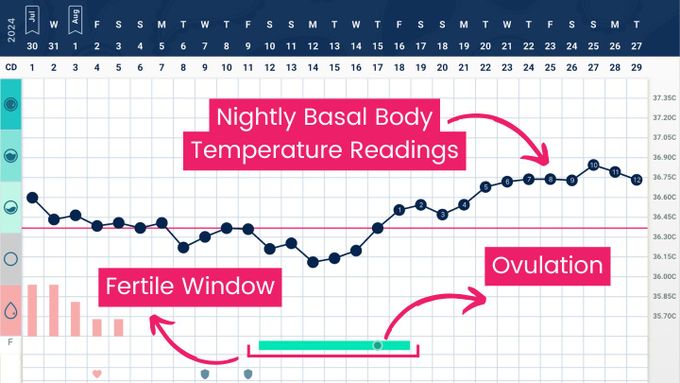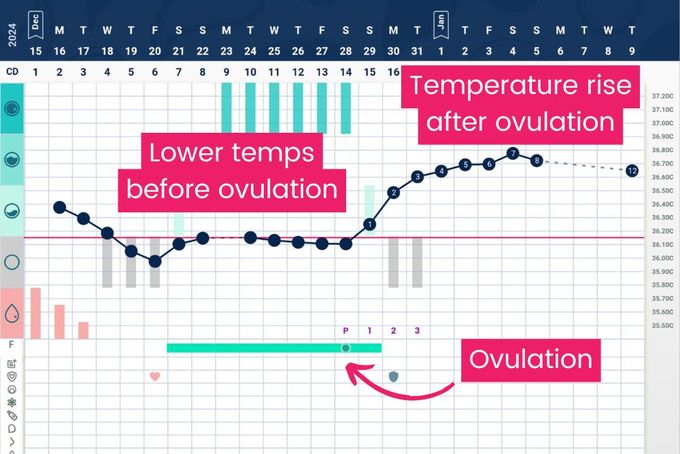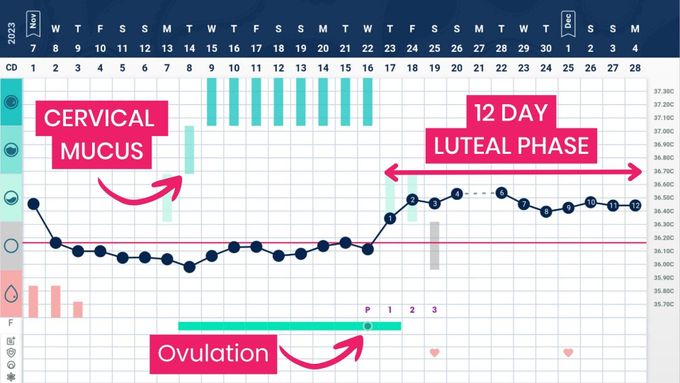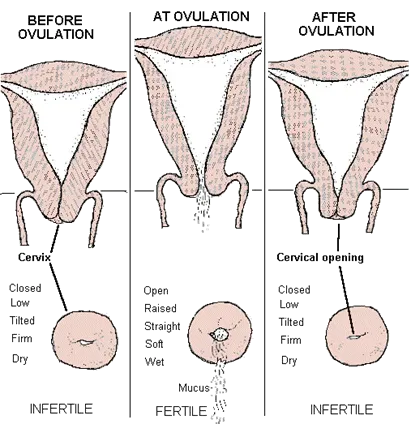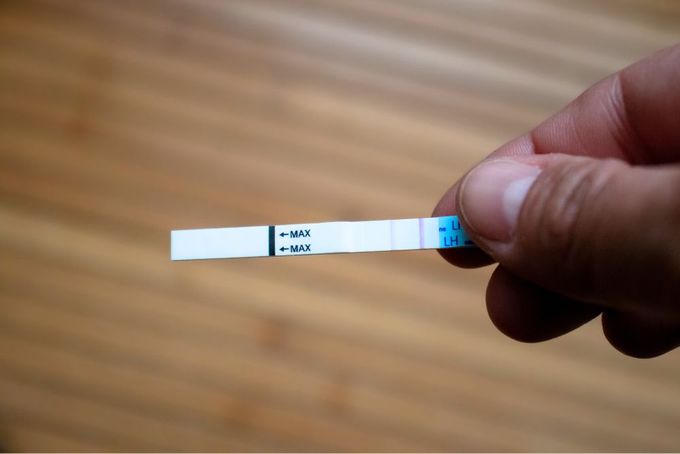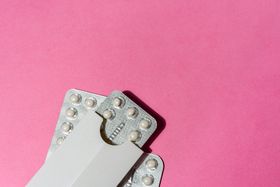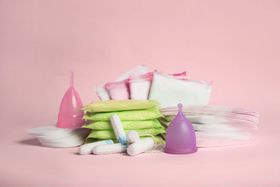Key Markers to Identify the Fertile Window
Updated July 7, 2025
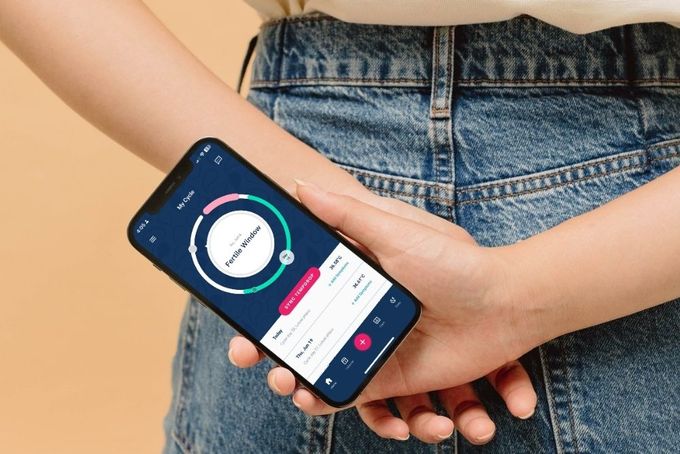
When you're charting, no matter your intentions, the fertile window is one of the most important parts of the cycle to identify each cycle. But how is it identified? Which signs should you track and which can be left behind? Today I'm going to teach you about the fertile window and cover the two most reliable ways to measure your fertile window, plus a few runner ups.
What is the Fertile Window?
There are four main hormones at play each cycle. These are estrogen, progesterone, luteinising hormone (LH), and follicle stimulating hormone (FSH). If you are naturally cycling (you’re not on hormonal birth control, in menopause, or early postpartum), then you will experience all of these regularly.
At the beginning of your cycle (day one being the first day of full bleeding), the hormone FSH recruits a follicle, or immature egg, to develop in an ovary. Estrogen slowly rises and begins maturing the follicle. Once it is ready to be released, the hormone LH peaks, triggering ovulation. Following ovulation, estrogen is replaced by the hormone progesterone as the dominant hormone, which maintains the uterine lining until your next period.
Ovulation, or the release of a mature egg from the ovary, is the main event of the cycle. Without it, you won't experience the domino effect that leads to your next period, and your next cycle. The fertile window is the length of time each month where pregnancy is possible. This information is key for any family planning intention, or for tracking your health!
When measuring the fertile window, take into account both the length of time that an egg survives, and the length of time that sperm can survive to fertilize an egg. Depending on how long a woman’s cycle is and her hormonal activity prior to ovulation, this window of time can vary. In general, a woman can only conceive 5-7 days per cycle, though it may be difficult in some cycles (especially if you experience irregular cycle lengths and/or hormonal imbalances) to narrow your fertile window down to 5-7 days.
Key Marker 1: Basal Body Temperature (BBT)
The first way to measure ovulation is by tracking your basal body temperature (or BBT). Your BBT is the lowest body temperature attained during rest. After you release an egg, progesterone raises your body temperature very slightly. You can measure that slight raise in temperature with basal body temperature as an important ovulation symptom.
BBT will only tell you ovulation has happened after the fact! It is a great objective measure of ovulation, as it's easy to measure correctly and simple to interpret. Some external factors can skew your temperature readings, like consuming alcohol the night before, not getting enough sleep, sleeping in a warmer or colder room than normal, or taking your temperature earlier or later than normal. If you have Tempdrop, you don’t need to worry about those things impacting your temps!
Key Marker 2: Cervical Mucus
It’s unfortunate, but cervical mucus gets a gross reputation. This means we haven’t been educated or made aware of the importance of cervical mucus for both avoiding pregnancy and getting pregnant. I only learned about the importance of cervical mucus when I first learned in depth about fertility awareness. Up until then, I thought it was a mildly gross nuisance. Cervical mucus is in fact very cool and really quite essential for getting pregnant or successfully avoiding pregnancy!
Cervical mucus is a hydrogel secreted by crypts in your cervix. These crypts, or tiny ridges, are influenced by the presence of estrogen and progesterone. Cervical mucus has the important job of keeping sperm alive and nourished, keeping infections out of your uterus, and helping only the highest quality sperm reach a potential egg. Without cervical mucus, sperm would die very quickly in the acidic vaginal environment.
The onset of cervical mucus after menstruation will let you know that your body is gearing up to ovulate, and tells you your fertile window has opened. This is because with the presence of cervical mucus, sperm stay nourished and viable for up to 5 days! Another important thing to note with cervical mucus is when you experience “peak” type mucus, it is around your most likely time for intercourse leading to conception. You can pay attention to cervical mucus in three categories.
Dry Cervical Mucus
These are days when you don’t experience any cervical mucus. Keep in mind that you may always notice some moisture as your vagina is a mucus membrane. A dry observation is different than a day you forget to observe mucus.
Non-Peak Cervical Mucus
These are days when you notice opaque, creamy, lotiony, not-stretchy cervical mucus, and/or a moist sensation when you wipe.
Peak Cervical Mucus
These are days when you notice stretchy (more than an inch) or elastic, clear or partly-clear, or watery cervical mucus, and/or a lubricative sensation when you wipe
Runner Up: Cervical Position
Just like cervical mucus is influenced by your cyclical hormones, so is the position of your cervix. Your cervix is the “gateway” between your vagina and your uterus, and you can find it by sticking a finger in your vaginal opening like you would put a tampon in, and feeling for a small nub that has a divet - kind of like a tiny cute donut. The divet is your cervical opening, and may be larger or smaller depending on if you’ve delivered a baby.
When estrogen is low, before and after your fertile window, your cervix will be firm, low, tilted, and closed. When estrogen is high, around ovulation, your cervix will be soft, high, and open. Checking your cervical position each day will give you another optional fertility sign letting you know how close ovulation is!
Runner Up: Luteinizing Hormone (LH) Tests and Ovulation Prediction Kits (OPKs)
LH tests are urine tests that measure the levels of LH in your urine. If you remember from the beginning of this post, LH is responsible for triggering the release of an egg at ovulation. You will experience an LH surge approximately 24-36 hours prior to ovulation, and this is what you are trying to catch when testing with LH tests. In general, I suggest using LH tests more than using OPKs, but to learn more about both check out this article.
How to Test Luteinizing Hormone
LH tests will usually come individually wrapped, or you can buy a more expensive Ovulation Predictor Kit (OPK) that does the readings for you. When you start noticing the shift to moist, non-peak cervical mucus after ovulation, that is the time to start testing LH. Test at the same time each day (usually the best time is early afternoon), by peeing straight on the stick or dipping it into a cup of your urine. A positive LH test looks like a dark line that matches the “control” line.
And that’s it! The four signs I recommend for measuring your fertility! Now you know how to rely on yourself to measure your fertile window, rather than an app or device.
